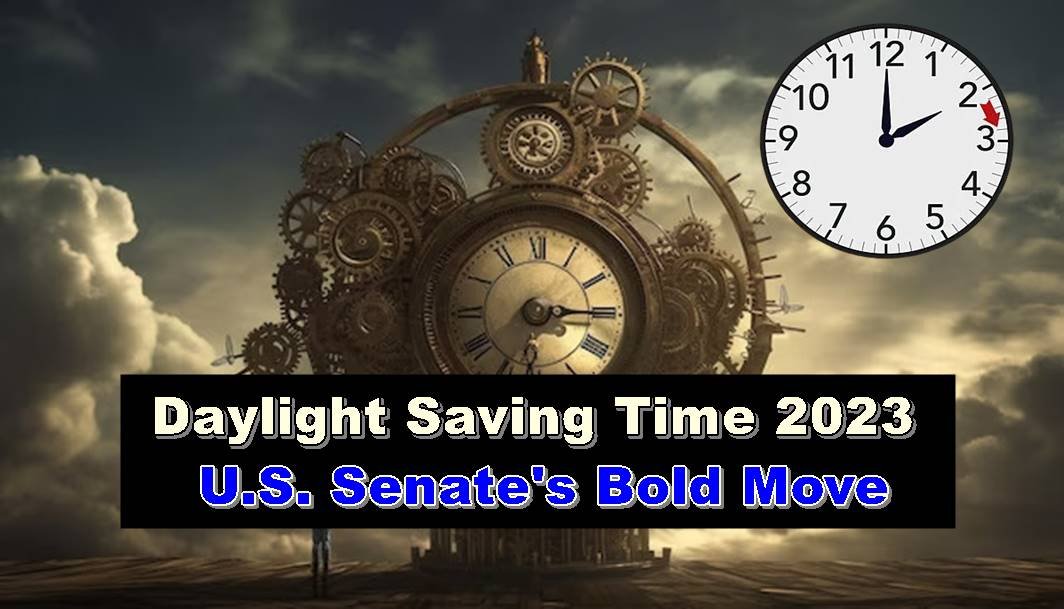WASHINGTON on 15 March (Reuters) – The U.S. Senate on Tuesday approved legislation to ensure that daylight saving time is permanent beginning in 2023, ending the biannual change of clocks. Advocates backed this change for better lighting and economic activities.
Unanimous Senate Approval for the “Sunshine Protection Act”
The Senate passed the measure, “the Sunshine Protection Act,” unanimously via voice vote. The House of Representatives, which has held a hearing about the issue, is expected to approve the measure before it can be sent to President Joe Biden to sign.
Mixed Signals from the White House and House Speaker Nancy Pelosi
The White House has not said whether Biden approves of the measure. A spokesperson of House Speaker Nancy Pelosi declined to say whether she was in favor of the legislation but did say she was looking into the bill carefully.
A Brighter Future: November 2023 Implementation
Senator Marco Rubio, one of the bill’s primary sponsors, stated that those who support the bill agreed that the change would be implemented in November 2023, following input from broadcasters and airlines.
READ MORE: Carlee Russell Vanishing Act: What Happened on That Fateful Day?
Health and Happiness: Benefits of Permanent Daylight Saving Time
This change will allow children to be outdoors for longer and help reduce seasonal depression, according to advocates.
Broad Agreement on a Small But Significant Change
“I realize that this isn’t the biggest issue facing America; however, it’s one of those topics on which there’s lots of agreement,” Rubio said. “If we can pass this bill, we won’t need to make this mistake again.”
Mixed Reactions from the National Association of Convenience Stores
The National Association of Convenience Stores opposed the changes by telling Congress in March, “We must not allow our children to be attending school in darkness.”
Daylight Saving Time: Recent Transition and Future Shifts
On Sunday, most parts of the United States resumed daylight saving time, advancing one hour. The United States will continue standard time in November.
State-by-State Efforts to End Clock Changes
Since 2015, around 30 states have enacted legislation to stop the annual changing of the clocks. Certain conditions suggest to end only if their neighboring states also do so.
Congressional Hearing on Daylight Saving Time’s Impact
The House Energy and Commerce Committee held a hearing on this issue last week. Rep. Frank Pallone, the committee’s chairman, stated, “The loss of that one hour of rest seems to have a lasting impact on us following. This can also harm the sleep habits of our children as well as the pets we have.”
Public Opinion and Health Concerns
Pallone supports a stop to the clock-switching but has yet to decide whether to accept either standard or daylight as a final option. Beth Malow, director of the Vanderbilt Sleep Division, argued daylight savings time causes it challenging to stay awake in the morning, stating that it “is equivalent to being in the incorrect time zone for about eight months during the entire year.”
Majority of Americans Prefer a Permanent Solution
Pallone referenced a poll from 2019 that showed 71 percent of Americans prefer not to change their clocks two times a year.
Improved Safety, Health, and Economic Impact
Making this change will reduce a slight increase in car accidents that typically occur during the time shifts. Studies have also shown slight increases in strokes and heart attacks shortly after the time change. The move can benefit businesses, such as golf courses, which may attract more customers with additional daylight hours in the evening.
Historical Perspective on Daylight Saving Time
Daylight saving time has been used throughout the United States since the 1960s after its introduction in 1918. The year-round daylight saving system was in use in World War Two and adopted in 1973 as an effort to cut down on energy consumption because of the oil embargo, which was repealed in the following year.
Impact Beyond the Mainland: Arizona, Hawaii, and U.S. Territories
The bill would permit Arizona and Hawaii, which don’t observe daylight saving time, to operate in standard time, as in American Samoa, Guam, the Northern Mariana Islands, Puerto Rico, and the U.S. Virgin Islands.
In conclusion, the U.S. Senate’s unanimous approval of the “Sunshine Protection Act” marks a significant step toward making daylight saving time permanent from 2023 onwards. Advocates argue that this change will enhance lighting and economic activities, allow children more time outdoors, and help alleviate seasonal depression. However, the bill’s fate rests with the House of Representatives and President Joe Biden. With mixed signals from key figures, the future of daylight saving time remains a topic of debate. Nevertheless, public opinion, safety concerns, and potential economic benefits are driving this proposed change, aiming to bring a more permanent and bright future to the nation.
